Up against a window and near the edge of our back deck I found a beautiful orb web and one of my favorite spiders in residence. It was a Orchard Orbweaver (Leucauge venusta). She is one of the few green spiders in Ohio, and is also famous for the iridescent silver reflective patches on her abdomen.
As I leaned over to admire her, I noticed that there was a second spider hanging in among a few strands of slik slung below the orb of the Orchard Spider’s web. I recognized this spider by her distinctive triangular body shape. It was an adult female Neospintharus trigonum (aka Argyrodes trigonum).
I felt like yelling to the Orchard Orbweaver the warning “There is a kleptoparasite in your web!” but she probably wouldn’t have understood. Neospintharus is infamous as a “web invader.” They add a few strands of silk to, or near an occupied spider web. Then they wait until the resident spider captures prey. If the resident is already busy with another prey item, or for some reason doesn’t notice the new potential prey, the Neospintharus sneaks into the web, cuts the prey free, and consumes it herself. This is a mooch behavior given the technical name “kleptoparasitism” based on parasitic theft.
Here are a couple of views of the thief, inches away from the resident.
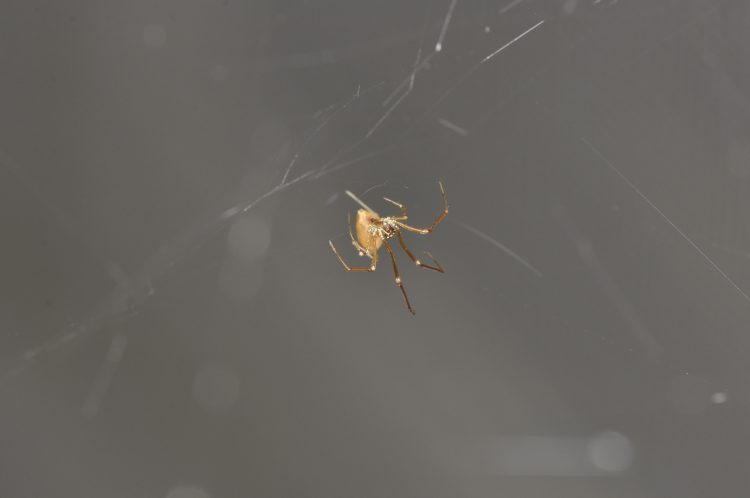
A Neospintharus trigonum female in a silk tangle below the web of an orchard orbweaver (Leucauge venusta).
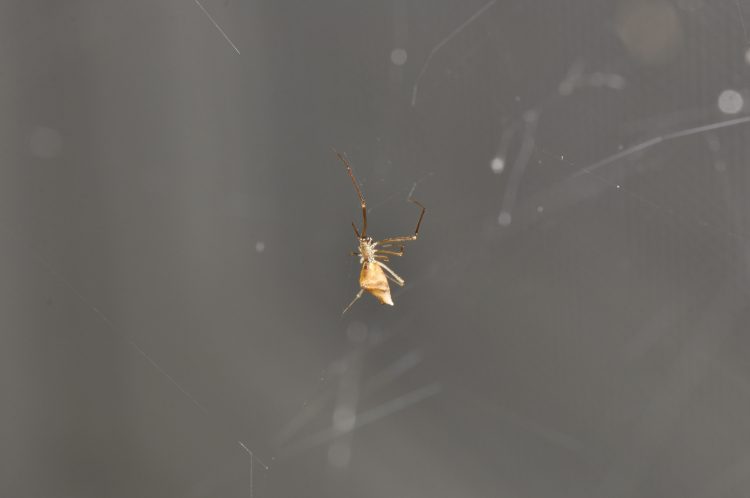
A Neospintharus trigonum female in a silk tangle below the web of an orchard orbweaver (Leucauge venusta).
In this case crime did pay, because the Neospintharus had evidently captured enough prey to develop and lay a clutch of eggs. Her beautiful inverted-urn shaped egg case was attached to the lower end of her little tangle near the window screen.
Here is another photo of the distinctive egg case of another Neospintharus trigonum.
Sometimes Neospintharus isn’t so passive. They occasionally attack the resident spider, eat her, and then take possession of the web. When they do this they eventually replace the original web with a three-dimensional tangle of their own making.
When they are inactive, Neospintharus trigonum can look very un-spiderlike. They fold up their legs agains their body and hang in the web looking more like a triangular bit of leaf or seed pod.
Here is a different female with her egg case.
In the current case, either the Orchard Orbweaver was too big to attack, or perhaps there was enough prey for both.

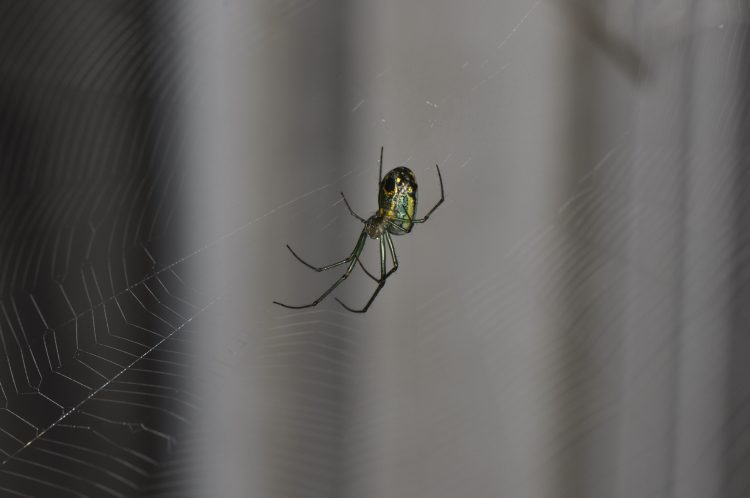
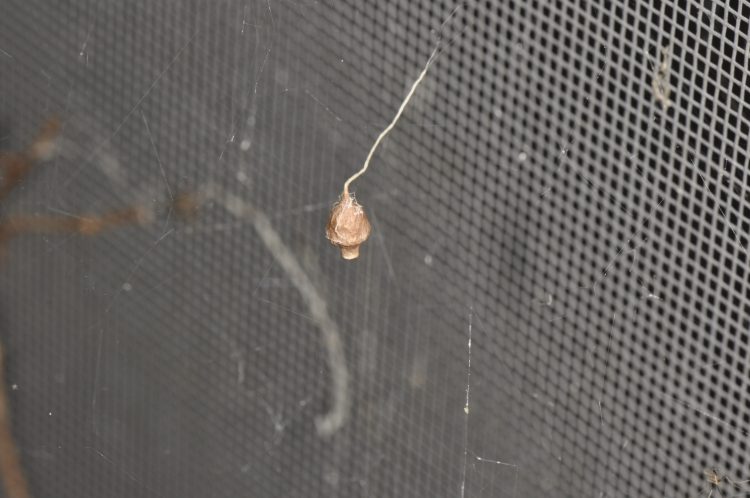
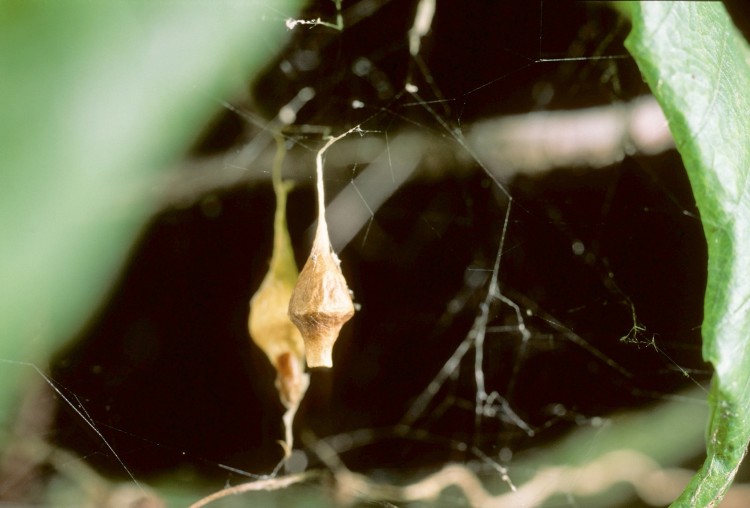
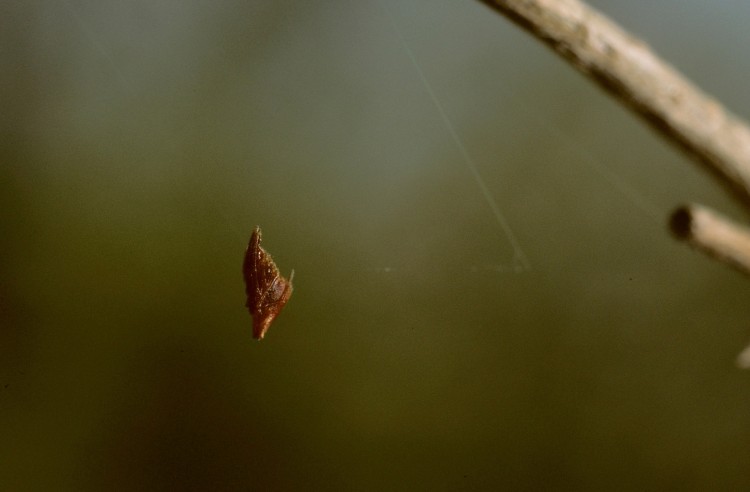
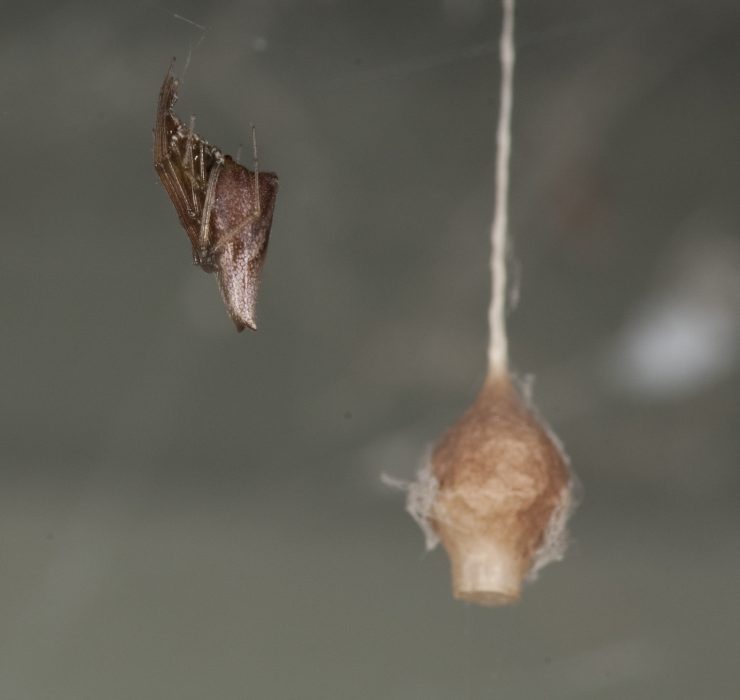
I have a QUESTION who wins in a territorial fight a male FALSE BLACK WIDOW SPIDER or a male orchard spider.
The biggest QUESTIONS are a male (FALSE BLACK WIDOW SPIDER) vs a male {orchard spider} and a male (FALSE BLACK WIDOW SPIDER) vs a male {joro spider} who wins
Males of one species rarely bother males of other species in my experience. They seem focused on finding females. I’m guessing any interactions between them would be rare.